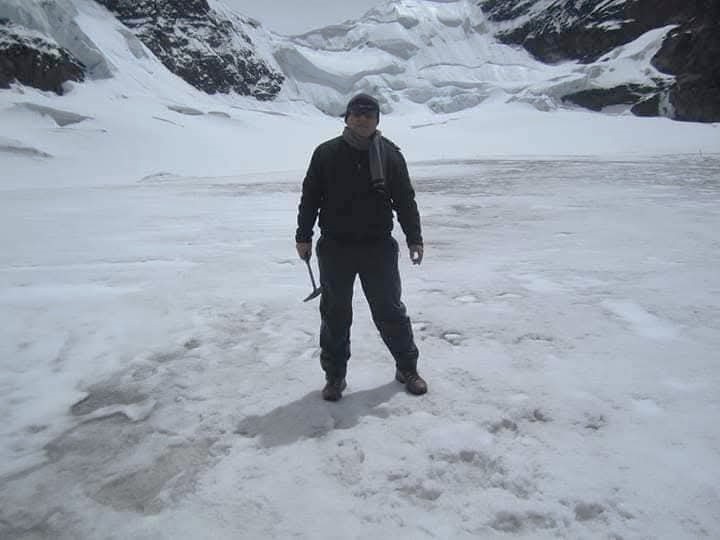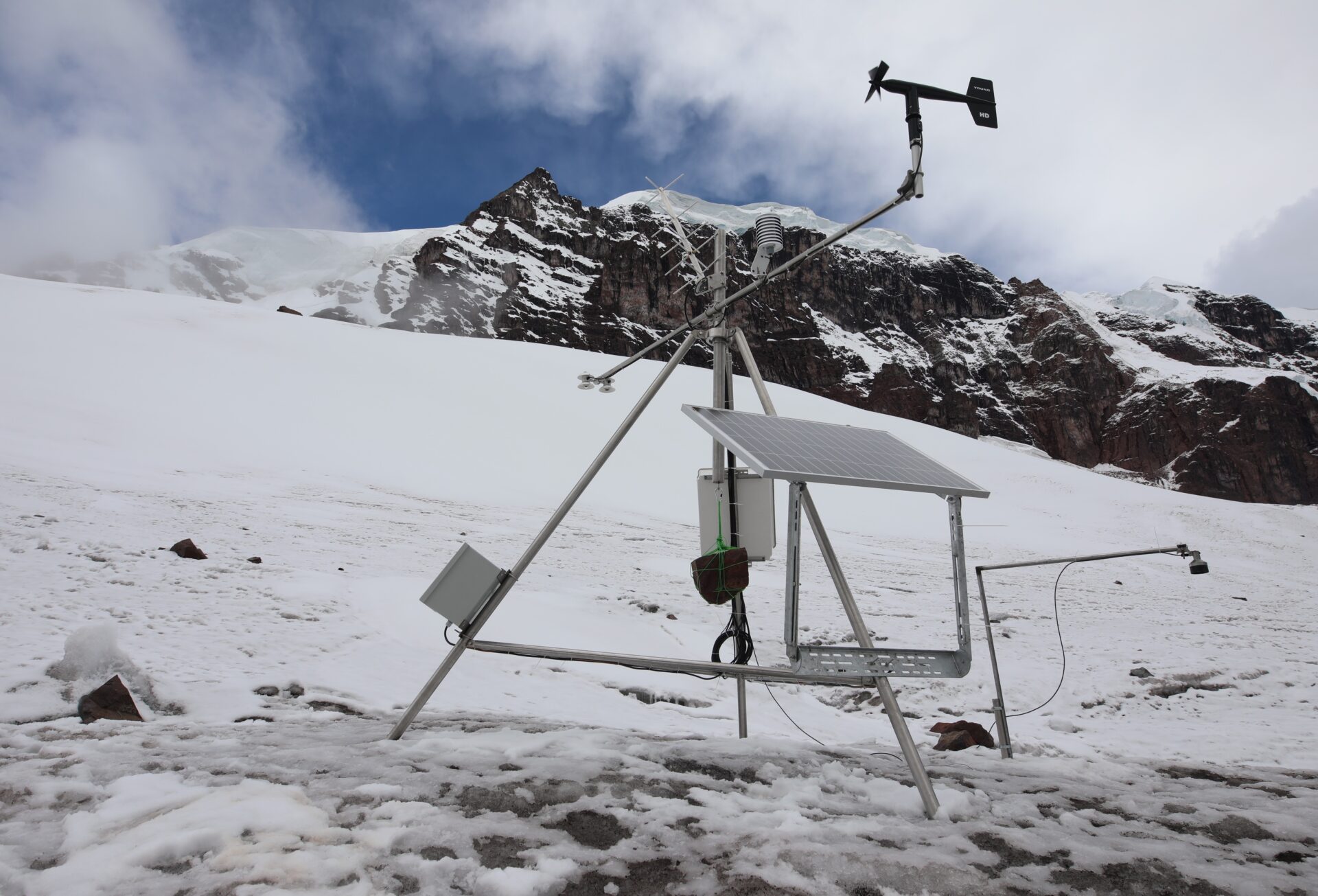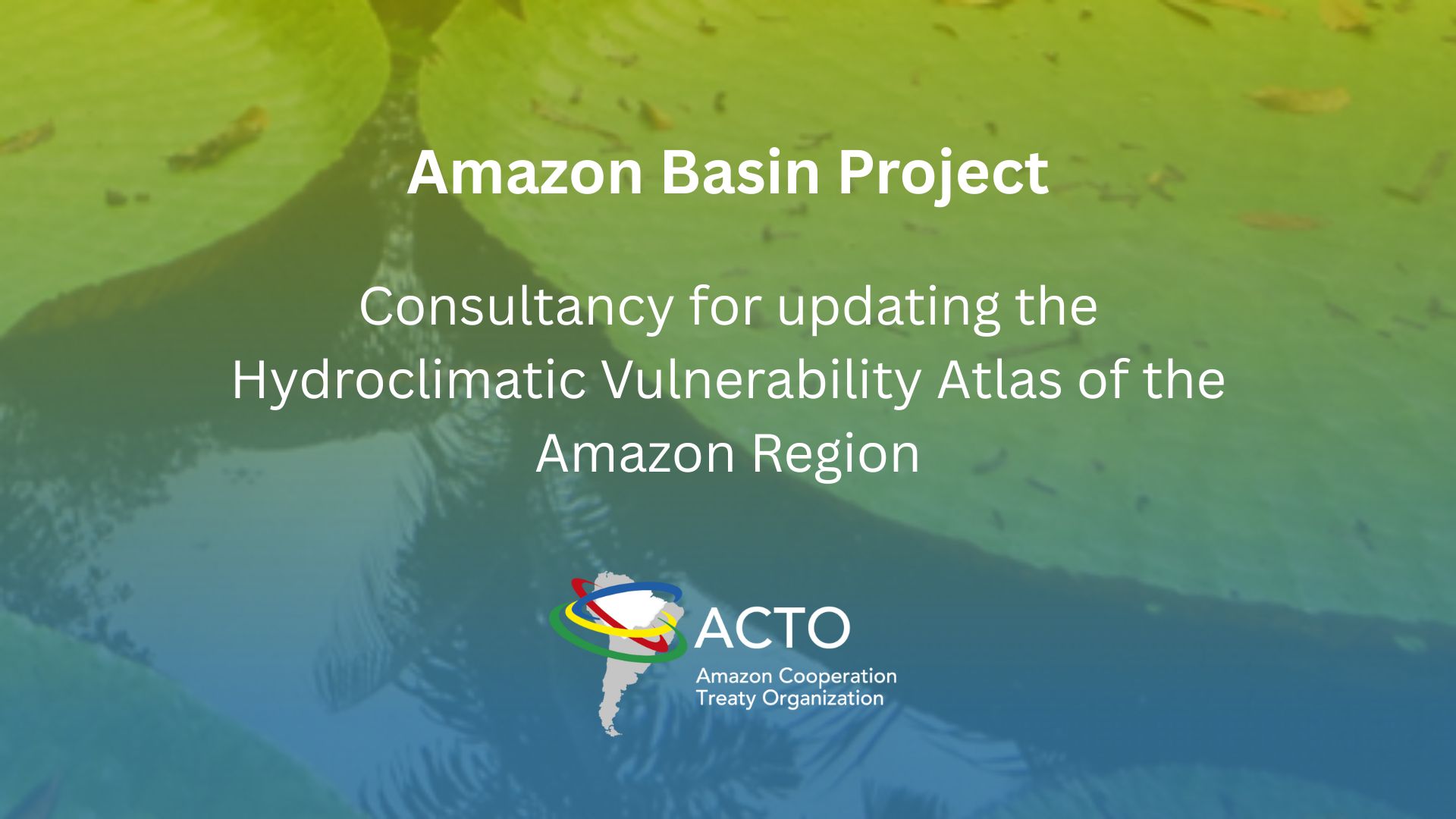The glaciers of the tropical Andes are among the most sensitive to rising global temperatures, as they respond rapidly to climatic variations over the decades, according to engineer Nelson Santillán from the Directorate of Water Resources Quality and Assessment at Peru’s National Water Authority (ANA). The country, which is home to 71% of South America’s tropical glacier surface, has lost 53% of its ice cover in the last 50 years—a trend that threatens water supplies for both Andean and Amazonian populations, as many rivers that feed the Amazon region originate in the Andes, including the Amazon River.
Nelson Santillán coordinates the intervention of the Amazon Basin Project (ACTO/UNEP/GEF) in Peru’s glaciers, which aims to strengthen the adaptive capacity of communities affected by the accelerated loss of these ice masses. The initiative includes the installation of four monitoring stations in the Vilcanota and Carabaya mountain ranges, sources of rivers essential for the Amazon basin and the water supply of more than 1.3 million people.
The engineer spoke with the Amazon Basin Project about the challenges of glaciological monitoring and the measures being implemented to address glacier retreat and its impacts on Andean communities and the Amazon region.
- Engineer Nelson Santillán during fieldwork on the Chuecon glacier, in Huarochirí-Lima.
- Santillán inspecting the La Rinconada glacier in Ananea-Puno
What role does monitoring play in mitigating glacier loss and strengthening community resilience?
Monitoring plays a crucial role in mitigating glacier loss and strengthening community resilience. It is the best tool for tracking the dynamic evolution of these ice masses in the highly adverse context of current climate change.
Through monitoring, we can understand glacier retreat rates, the speed of ice loss, the formation of glacial lakes, ice melt and its water equivalent, and identify critical areas where glacier loss may significantly impact communities and infrastructure.
Additionally, monitoring allows communities to plan and prepare for the possible effects of glacier loss, develop adaptation strategies, issue early warnings about disastrous events such as avalanches, floods, or landslides, and raise awareness about the importance of glacier conservation in the face of climate change.
In summary, monitoring is essential for understanding glaciological dynamics, identifying vulnerable areas, and strengthening the resilience of communities facing glacier loss.
What technical and logistical challenges arise in the installation and maintenance of monitoring stations in high mountain regions? How have these difficulties been overcome in Peru to ensure continuous data collection?
The installation and maintenance of monitoring stations in high mountain regions, both in our country and in other areas with similar geomorphologies, face significant technical and logistical challenges due to the rugged terrain. Access is often difficult, with no proper roads, and extreme conditions such as low temperatures, strong winds, heavy rains, and electrical storms can damage the equipment. These factors considerably complicate the ascent and installation of the stations.
To overcome these challenges, detailed planning, the participation of qualified and experienced professionals, and the availability of adequate resources are essential. In most cases, local residents, who have deep knowledge of the topography, climate, and risks of the region, are crucial to the success of these projects. Their understanding of the terrain and local conditions is key to ensuring safety and effectiveness in continuous data collection in these high mountain regions.
Beyond technical and logistical challenges, what other social, cultural, or institutional obstacles have been encountered in the installation and operation of monitoring stations? How has dialogue with local communities helped overcome these barriers and ensure sustainability?
Engaging and approaching the communities near the areas where monitoring stations are to be installed is fundamental. The success of these initiatives depends largely on obtaining social approval from the communities. That is why it is essential to plan in advance meetings for awareness-raising, training, and dialogue so that communities take ownership of the project and understand its importance.
These actions must be taken seriously, as if communities are not fully convinced of the benefits and significance of the stations, there is a high risk that they will be damaged or even destroyed. Unfortunately, we have already had negative experiences in several snow-capped mountain ranges in the country, which have taught us the importance of establishing open and continuous dialogue with local communities. This approach is essential for overcoming obstacles and ensuring the sustainability of monitoring stations.
Beyond monitoring, what mitigation and adaptation measures are being implemented in the Peruvian Andes to address glacier retreat? Do you know of similar experiences in other Andean countries that could serve as references or inspiration?
Several mitigation and adaptation measures are being implemented to reduce the impacts of glacier retreat. These are based on the understanding that the main cause of ice mass reduction is the increase in greenhouse gas (GHG) emissions, which drive global warming and alter climate variability.
In this context, research and monitoring projects are being conducted to better understand the impacts of glacier retreat on watersheds with ice cover. Reforestation initiatives are also being carried out to stabilize the hydrological regime, especially in periglacial areas. Additionally, actions to conserve fragile ecosystems, focusing on river headwaters, are being intensified, and adaptation strategies are being developed to support communities. Among these strategies, the implementation of early warning systems for destructive geodynamic events stands out.
Moreover, an agreement is being formulated between Peru’s National Water Authority (ANA) and India to investigate the creation of ice stupas—artificial conical structures that store frozen water during winter and gradually melt in spring and summer, ensuring water supply for agriculture. This technique has been successfully implemented in over 50 locations in India, and scientists have recently developed an automated model to improve its efficiency. In recent months, scientists and engineers have developed an improved automated design to overcome these challenges, and India has launched the Demonstration of Automated Ice Reservoirs Initiative (DAIRI) to evaluate this technology.
Other countries, such as Chile, Brazil (with interventions in Antarctica), Nepal and Italy, have also been researching ways to create artificial ice to compensate for melting glaciers, but the results are still limited.
How can monitoring and adaptation actions help prevent glacier reduction from worsening water crises in the Amazon?
Monitoring the evolution and behavior of glaciers allows us to assess the degree of dependence of Amazonian watersheds on ice cover, as well as the speed and impact of glacier loss on water availability. Understanding this hydrological dynamic helps identify critical areas where ice mass reduction may significantly affect water supply, exacerbating water crises in the Amazon.
On the other hand, adaptation actions allow for the development of water management plans that consider glacier reduction and climate variability. This includes conservation measures, efficient water use strategies, and storage infrastructure to ensure availability during drought periods. Additionally, adaptation strengthens the resilience of communities that depend on glacial water through training, education on water management, and biodiversity conservation.
Fires in the Amazon release black carbon, which settles on Andean glaciers and accelerates their melting. Besides curbing deforestation and fires, what other measures could be taken to reduce this impact and strengthen the connection between protecting the Andes and the Amazon? What role could regional cooperation and local communities play in this strategy?
Involving local communities is key to reducing the impact of black carbon on Andean glaciers and strengthening the connection between protecting the Andes and the Amazon. Education and awareness play a key role in transforming behaviors and practices that harm the environment. It is necessary to develop and implement environmental education programs that highlight the interdependence between the Andean and Amazon ecosystems, promoting the protection of forests and the adoption of sustainable practices.
In addition, the active participation of communities in decision-making about natural resource management is essential. Local knowledge and experience offer valuable solutions for conserving the ecosystems of the high Andes and the Amazon, strengthening environmental governance and resilience to climate change. Regional cooperation between Amazonian countries can also foster joint initiatives to reduce forest fires, promote sustainable land management and protect the interconnected ecosystems of the Amazon basin.
Cover photo: Peruvian Andes – Pixabay / soylaritis_f
Related news
Post
27 de November de 2025
Four glaciological, meteorological, and hydrometric monitoring stations have been installed in the Vilcanota and Carabaya mountain ranges in southern Peru [...]
Post
3 de November de 2025
The Amazon Cooperation Treaty Organization (ACTO) announces a call for specialized technical services to update the Atlas of Hydroclimatic Vulnerability [...]
Post
20 de March de 2025
On World Glacier Day, celebrated on March 21, the international community reinforces the urgency of protecting these natural reservoirs of [...]






